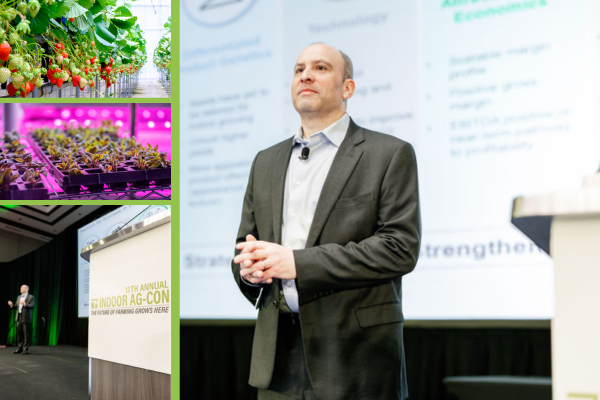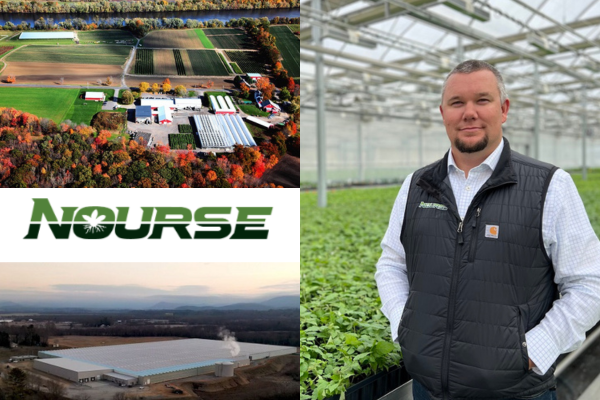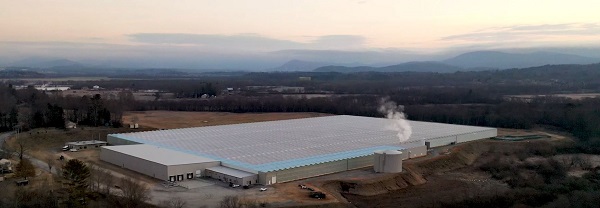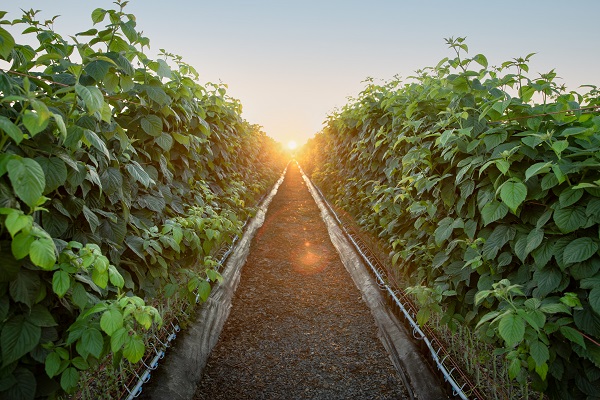Indoor Ag Revolution: Citi’s Adam Bergman Shares Strategies For Growth, Sustainability
In this Q&A following his keynote address at last week’s Indoor Ag-Con 2024, “Indoor Farming – The Next Revolution In Agriculture,” Adam Bergman, Global Head of AgTech Investment Banking for Citi, sheds light on the promising trajectory of indoor farming despite the challenges encountered in 2023. He discusses the pivotal role of technology, financial strategies, crop diversification, funding opportunities, and strategic partnerships in propelling the indoor farming sector towards a sustainable and prosperous future.
Q: In your keynote, you talked about the promising future of indoor farming despite setbacks in 2023. Can you elaborate on specific strategies and/or innovations that you believe will drive the rapid growth of indoor farming, especially in the context of the mega trends of food security, sustainability, and health & nutrition?
A: Food security, sustainable food systems, and health & nutrition are the biggest drivers of indoor farming. Food security initially spurred on indoor farming because of the supply chain disruptions caused by the Covid pandemic and Russia’s invasion of Ukraine. As a result, the trend toward food globalization that started following World War II has gone into reverse. In the past few years, a growing number of countries, especially those in the Gulf Cooperation Council (GCC) that generated a huge amount of money during a period of high energy costs, speak more about food self-sufficiency and the role of indoor farming. Indoor farming is attractive to the GCC, because they do not have enough arable land and/or an optimal climate to grow outdoors.
As climate change persists, conditions are getting harsher for outdoor farmers, who are forced to deal with increasing weather volatility. Additionally, the global population is expected to reach 10 billion by 2050, which will necessitate roughly a 50% increase in the amount of food produced. Farmers, working with governments and NGOs around the globe, are going to need to figure out how to grow more with similar or fewer resources (chemical fertilizers, crop chemicals & pesticides, land, and water). Since indoor farms typically don’t use chemical fertilizers, crop chemicals or pesticides, and use significantly less land and water, they are a better solution for more environmentally sustainable agriculture.
The consumer also plays a key role in the food system. Previously, consumers were frequently beholden to CPG companies and retailers to purchase food. However, there have been significant changes in how consumers, particularly in the developed world, purchase food (direct-to-consumer, online purchases, food delivery, and meal kits), which is disintermediating many incumbents. Gen Z and Millennials especially are pushing back against industrial agriculture, which has played a large part in the ecological harm to soil and contamination of ground water, lakes, rivers, streams, and oceans, as well as damaging human health, as obesity rates have soared globally. Today, more consumers are demanding fresher, healthier and more nutritious foods that is grown sustainably. Indoor farms can be built on sites close to population centers, one advantage of which is having a much shorter supply chain. Consumers can buy produce that lasts longer before spoiling and indoor farmers can grow products for taste, texture, and nutrient density rather than yield and logistics, which are priority for outdoor farmers shipping across North America or around the globe. In total, these three mega trends of food security, sustainable food systems and health & nutrition are poised to have a significant impact in accelerating on the growth of indoor farming globally.
Q: Your extensive experience in Clean Energy Transition and AgTech investment banking positions you at the intersection of technology innovation and climate change. How do you envision technology advancements influencing the future of indoor farming, and what role can financial institutions play in supporting these technological innovations for sustainable growth?
A: Innovations in the greenhouse sector have accelerated over the past 150 years, with automation & robotics, building materials, digitization, more efficient water usage and improved energy efficiency all driving progress recently. The vertical farming sector is poised for similar transformational changes as LED light technology advances, and seed genetics are optimized to grow plants under various light spectrums. Once more indoor farms get to a point where key risks have been mitigated (financial performance, including positive EBITDA, multiple farms operating at full capacity, project developers with a strong track-record, and customer off-take agreements), financial institutions can play a significant role in financing new indoor farms, similar to the role they played in the growth of solar and wind projects. Once bankruptcy risks for indoor farming companies and projects are substantially reduced, opportunities will open up for project finance with 70+% debt to develop indoor farming and cheaper capital from insurance companies and pension funds looking for strong, long-term cash-flowing entities.
Q: In your presentation, you touched on the expansion of crop production into areas like higher-margin produce, pharmaceuticals and specialty ingredients. Could you provide insights into strategic considerations for indoor farmers looking to diversify their crop portfolios, and what opportunities you foresee in these emerging markets?
One of the challenges many vertical farming companies face is high production costs. This is mainly due to limited production capacity and high capital expense and operation costs currently. As vertical farms continue to struggle to be cost competitive with outdoor grown produce and many greenhouses, it is extremely important to diversify away from leafy greens to grow other products that command higher prices. This is similar to the biofuels sector two decades ago, when various companies decided to compete against the commoditized fuel sector rather than specialty chemicals, which could be sold at a much higher price point. Those companies that tried to compete against commoditized fuels frequently went bankrupt as they were capital intensive and did not have the requisite scale or cost structure to be economic. Only those companies that focused on specialty chemicals were able to achieve a cost structure that made economic sense and, as they expanded and optimized production, were able to reduce costs and become cost competitive with more commoditized end-markets. Based on the trends I have seen, I believe the same thing will occur with vertical farms, which should look to provide a variety of products that can be sold at higher prices (berries, coffee, forestry, pharmaceuticals, specialty ingredients), and ultimately to achieve economies of scale and drive costs down.
Q: In the context of securing funding for sustainable growth in the indoor farming sector, you mentioned leveraging the USDA loan program and other non-dilutive sources of capital. Can you offer practical advice for businesses in the CEA industry on accessing these funding opportunities and navigating the financial landscape successfully?
The equity capital markets remain extremely challenging for most early- and growth-stage companies, with the traditional debt markets available for only a few of the largest, most profitable indoor farming companies. In challenging capital markets, it is more important that companies look for creative non-dilutive sources of capital. The two areas that show the most promise are government grants and government-backed loans. To this end, several companies have been able to secure state and local incentives to build new indoor farms in various locations throughout the US. Additionally, a growing number of indoor farming companies have accessed USDA loan guarantees. The advantage of loans associated with the USDA is they typically come at lower interest rates and frequently have lower covenants. Capital will remain one of the biggest obstacles for expanding indoor farming operations throughout North America and the rest of the world.
Q: Strategic partnerships play a key role in the success of companies in the indoor farming sector. From your perspective, how can companies best approach and establish meaningful collaborations with partners like crop input providers, suppliers, retailers and others to drive innovation and overcome challenges?
A: Like many highly capital-intensive growth sectors, indoor farming faces challenges in validating their business as a prerequisite to accessing capital, both equity and debt. In particularly difficult capital markets, strategic partners provide a means of validation for investors. It is also equally important to establish relationships with key customers, both food service and retailers. Finally, to be an attractive to potential investors, indoor farming companies need to be able to answer the following questions posed by investors:
1) What is your proof that you can build an indoor farm and scale production?
2) Are there consumers who want to buy your products?
3) Will consumers buy your products at a price where you can generate positive gross profit and EBITDA margins?
Those companies with positive answers will find an increasing amount of capital availability for growth, whereas those that struggle, particularly to generate positive financial metrics, will find sources of capital limited.





